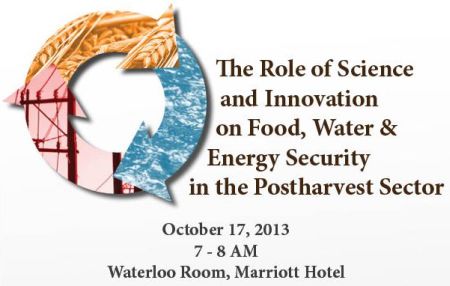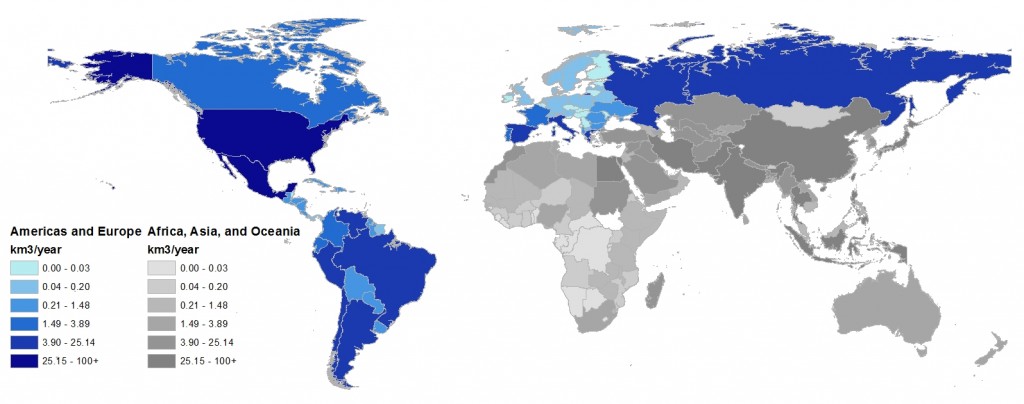by Kari A. Wozniak
 As of late this summer, the ADM Institute is a partner of an innovative initiative called “The Power of 3: Food, Water, and Energy”, with the Institute of Food Technologists (IFT) and others. This partnership unites the strengths of industry and academia behind a science-based effort to develop cross-cutting solutions for global food security. It was launched earlier this year at IFT’s annual conference, and will continue at this year’s Borlaug Dialogue at our co-hosted side event, “The Role of Science and Innovation on Food, Water & Energy Security in the Postharvest Sector”.
As of late this summer, the ADM Institute is a partner of an innovative initiative called “The Power of 3: Food, Water, and Energy”, with the Institute of Food Technologists (IFT) and others. This partnership unites the strengths of industry and academia behind a science-based effort to develop cross-cutting solutions for global food security. It was launched earlier this year at IFT’s annual conference, and will continue at this year’s Borlaug Dialogue at our co-hosted side event, “The Role of Science and Innovation on Food, Water & Energy Security in the Postharvest Sector”.
Why? Important research released in recent years has highlighted numerous effects of crops being lost along the supply chain – money is lost, food supplies are lessened, and agricultural inputs such as water, energy, and labor are wasted. Yet, this partnership challenges us to zoom out to see an even bigger picture. As postharvest losses disrupt social, economic, and environmental well-being, they act as assailants on a system where the price of bread can contribute to the overthrow of governments. The global food supply chain, actually a complex compilation of diverse chains, is an increasingly vulnerable provider of food and other goods.
Crises like the 2008 bread riots have driven decision-makers concerned about stability, sufficiency, and sustainability to pay closer attention to the inextricably linked issues of food, water, and energy security. The interconnectedness of these essential components defines a perspective called the food-water-energy nexus.
Many projects and programs in the agriculture sector employ the nexus perspective. Partners and resources are aligned to look at, for example, how to achieve regional food security by ensuring sustainable water supplies in drought-prone areas. Precise calculations are made of how to not only use limited resources most effectively, but how to balance them as well. Most programs remain focused on production and pre-harvest phases, however. This partnership is about filling that gap, and adding postharvest stages to the agenda.
The latest FAO report[1] states that total postharvest losses have a blue water footprint of approximate equivalence to the Western Hemisphere’s irrigated water requirement[2], and in aggregate, emit more greenhouse gases than nearly every country in the world. To reduce and prevent those losses means we contribute to a global effort to support the life of billions with fast-depleting resources. Sustainability is the bigger picture, and the food-water-energy nexus can be a useful guide.
We view this as an important dialogue, and hope you will join the discussion. If you happen to be in Des Moines Iowa in October, attend our side event. You can also follow the conversation online at #Pof3.
[1] FAO. 2013. Food wastage footprint impacts on natural resources. Retrieved from: http://www.fao.org/nr/sustainability/food-loss-and-waste/en/, September 24, 2013.
[2] AQUASTAT. 2012. Irrigation water requirement and water withdrawal by country, p. 30. Retrieved from: http://www.fao.org/nr/water/aquastat/water_use_agr/index.stm, September 24, 2013.



No comments yet.